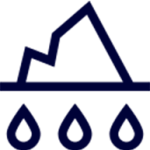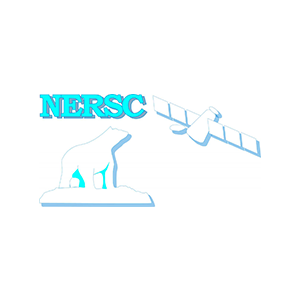Arctic+ Salinity
Project Overview
Sea Surface Salinity (SSS) is a key indicator of the freshwater fluxes and an important variable to understand the changes the Arctic is facing. However, salinity in-situ measurements are very sparse in the Arctic region. For this reason, remote sensing salinity measurements (currently provided by L-band radiometry satellites, SMOS and SMAP) are of special relevance for this region.
The retrieval of SSS in the Arctic represents a challenge, because brightness temperatures measured by L-band satellites are less sensitive to salinity in cold waters. An additional drawback consists in the presence of sea ice, that contaminates the brightness temperature and must be adequately processed.
The ESA Arctic+ Salinity project (Dec 2018 – June 2020) will contribute to reduce the knowledge gap in the characterization of the freshwater flux changes in the Arctic region.
To learn more about the project, click here

Objectives

Develop a new algorithm and novel approaches with the aim of producing the best quality validated SMOS SSS product in the Arctic region with its corresponding accuracy. Additionally, SMOS and SMAP data will be combined with the aim to improve the radiometric accuracy and the characterization of the product biases and stability.

Assess the relation between the dynamics of SMOS salinity with respect to land freshwater fluxes (Greenland and glacier flows) and ocean freshwater fluxes (rivers and E-P balance) using model outputs. This has the objective to quantify the freshwater fluxes through SSS products.
![]()
Assess the impact of the new SSS satellite data in a data assimilation system (the TOPAZ4 system, both in forecast and reanalysis mode) with the idea that, if an improvement is demonstrated, the assimilation of SMOS & SMAP products in TOPAZ will be part of the new Arctic reanalysis and forecast products on the CMEMS portal.

Define a roadmap describing the future work to better characterize the freshwater fluxes for the Arctic regions. The output of this project will be of great benefit for the on-going ESA Sea Surface Salinity Climate Change Initiative (CCI) project, which started in February 2018.
The outputs of the project
The distribution to the scientific community of the best-up-to-date sea surface salinity maps especially designed for the Arctic region as retrieved from SMOS and from the combination of SMOS and SMAP with their corresponding uncertainties.
Explore the feasibility and utility of assimilating the surface salinity maps product in the TOPAZ4 model.
The potential problem the project face is the sparse in-situ data availability in the area which is needed for a complete validation assessment. Other potential problems are the sea ice edge that has a direct effect in the brightness temperature and the RFI contamination. But several solutions have already been identified.
Data Access
Arctic+ Salinity aims to improve the current methodology of retrieving Sea Surface Salinity (SSS) from satellites. Any feedback about the quality and usability of this new dataset is more than welcome! The Arctic+ Team would love to hear about your research utilising the Arctic+ Salinity data and in return we ask that you appropriately reference this website in your work.
Arctic+ Salinity data to be made available in October
Arctic+ Salinity
Case Studies
This image present the region covered by the Arctic+ dataset. The red circles relates to the main seas and bays whereas, the green circles indicate the main river mouths investigated.
ARGANS Limited
Arctic+ Salinity
ARGANS, is a UK-registered company with headquarters based in Plymouth UK, offices in Sophia-Antipolis and Brest, and staff located in London and Southampton.
We are specialists in satellite-based Earth Observation, remote-sensing applications and services, and geographical information systems used to map and monitor the marine, atmospheric and terrestrial environments. The team at ARGANS are also industry standard professionals in coastal charting through the application of satellite derived bathymetry.
ARGANS offers satellite mission solutions across a range of services, including development of ground segment algorithms and applications, data quality assessment and validation, or operations on behalf of space agencies, while keeping a strong scientific expertise in remote sensing science.
The company has forged strong partnerships through joining consortia both as prime and sub-contractor with UK, European and International entities: companies, research institutes, universities and individual scientific consultants.
In association with our partners :
BEC-ICM
The Barcelona Expert Center (BEC) is a joint venture among Institute of Marine Sciences, CSIC (ICM),
Universitat Politècnica de Catalunya (UPC) and Institute of Space Studies (IEC).
NERSC
The Nansen Environmental and Remote Sensing Center (NERSC, www.nersc.no) is an independent non-profit research foundation affiliated with the University of Bergen, Norway.
Arctic+ Salinity
Links of interest
Arctic+ Salinity













